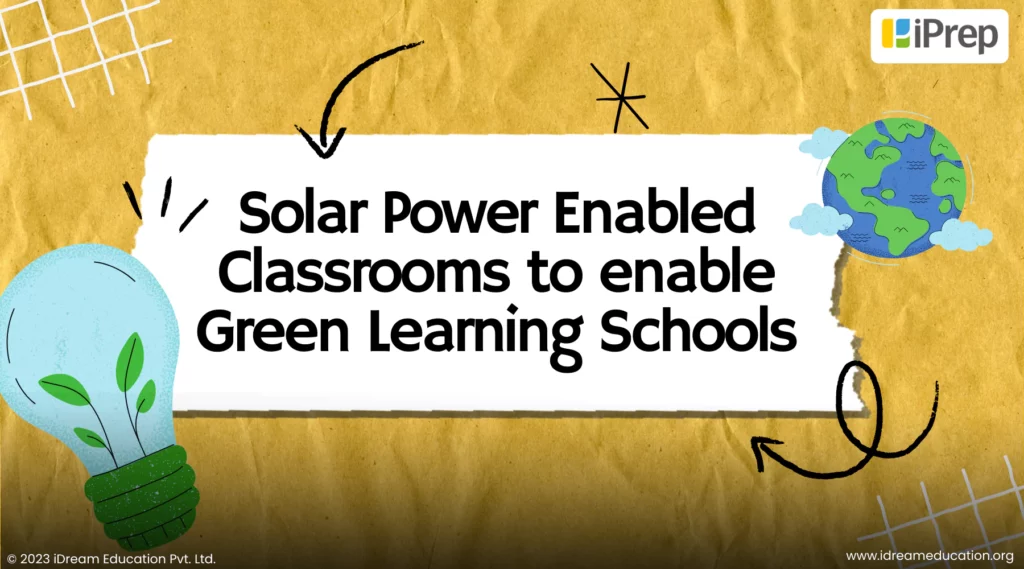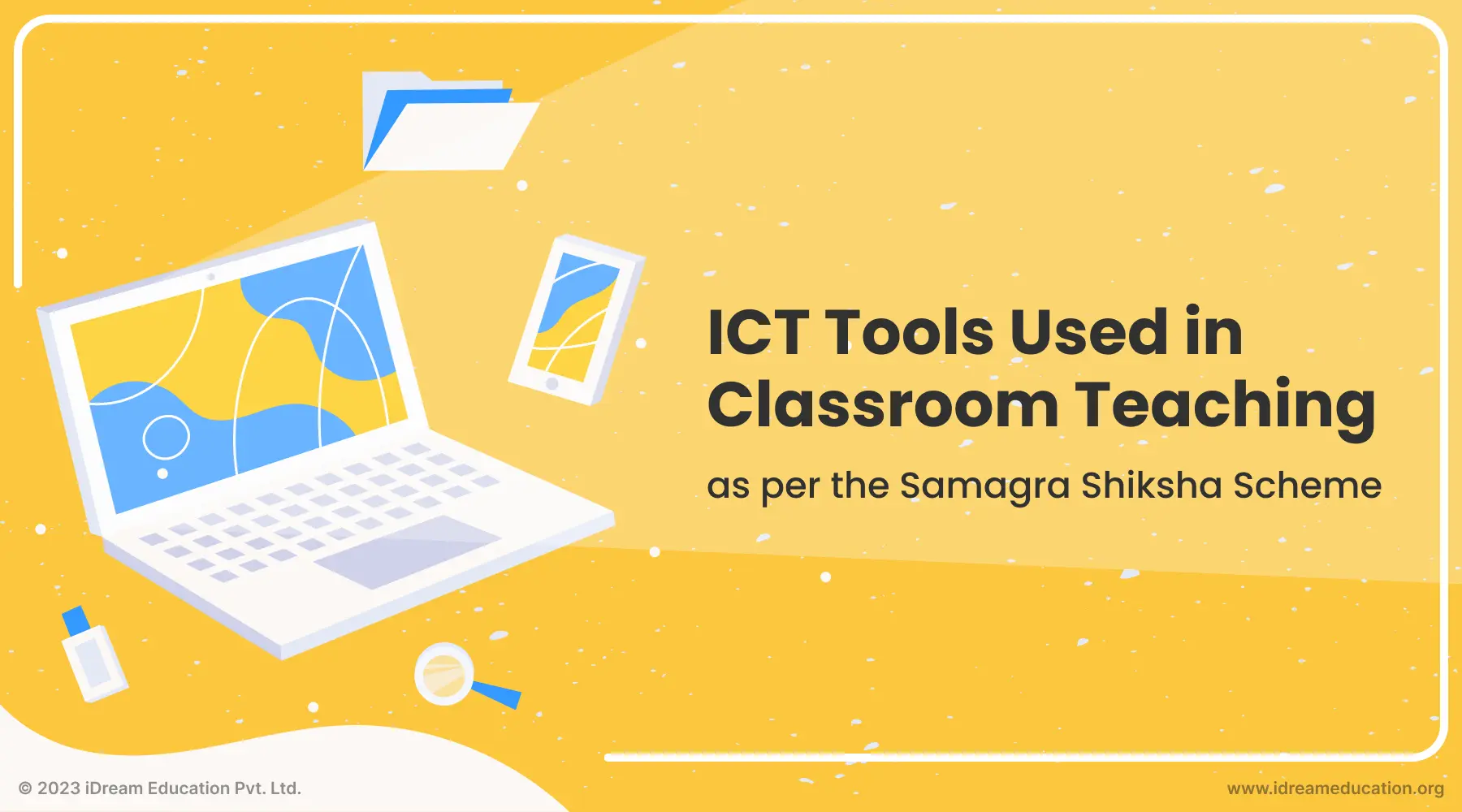Solar Power Enabled Classrooms to Enable Green Learning Schools
Discover how corporates, foundations, NGOs, and other people working to enable digital education in India can enable sustainable and green technology in classrooms by setting up Solar Power Enabled Classrooms.

Over the years, the government has been actively pursuing initiatives to enhance school facilities. This has resulted in significant improvements in areas such as drinking water, midday meals, sanitation, electricity, and more. Despite commendable progress, achieving equitable distribution of educational resources remains a challenge.
A recent survey and analysis of ASER 2022 across different Indian states underscore the need for sustainable infrastructure in many schools.
Not only do some schools lack electricity connections, but often those that do experience unreliable electricity. This points towards the need for sustained efforts to bridge these gaps in educational resources.
A Closer Look at ASER 2022 Findings Across States
As per the ASER 2022 report, the status of electricity facilities in rural regions across states reveals:
Some schools lack electricity connections
Some schools did not have a proper electricity supply on the day of the survey
In Haryana, for instance, 98.8% of surveyed schools were equipped with electricity connections in 2022, but 86.3% had operational electricity during the visit. This trend is consistent in Jharkhand, where 92.4% of schools had electricity connections, yet 73.1% had electricity on the day of evaluation. Similarly, in Jammu and Kashmir, 88.9% of schools had electricity connections, but the operational rate on the visit day stood at 83.5%. The pattern persists across states such as Karnataka (97.8% with connections, 90.6% operational), and Madhya Pradesh (85.1% with connections, 73.1% operational), and is reflective of the broader scenario in other states.
Food for thought for Civil Society Organizations?
Both the government and the private sector are actively working to resolve the load-shedding issue by equipping schools with power backups.
“Sohkymphor Secondary School, situated in the remote region of Sohkymphor within the East Jaintia Hills District, stands out as an inspiring example”, said Jayvrat Dubey, Assistant Manager – Analysis and Impact, iDream Education.
He further said, that despite facing extreme load-shedding issues for days, the students and teachers at Sohkymphor Secondary School did not lose hope of using a smart classroom setup. In the face of these difficulties, teachers took the initiative and approached the school authorities with a humble request— for a power backup system that would empower them to utilize at least one of the three smart classrooms implemented in their school. With a consistent electricity supply, the school now has the third-highest smart class usage record, totaling an impressive use of smart class content for 108 hours in 3 months.
Setting up power backup systems in every school comes with significant costs and the ongoing challenge of maintenance.
Acknowledging this, iDream Education is encouraging a forward-thinking approach by advocating for solar power enabled classrooms.
Through this, they not only address the persistent issue of load-shedding in some rural regions but also align with a sustainable, eco-friendly ethos. iDream Education through its partnership with organizations such as R2V2 enables solar panels in rural households and schools. This not only reduces the financial burden on implementing partners but also helps them contribute positively to mitigating climate change. Through solar power enabled classrooms, iDream Education envisions an uninterrupted, environmentally responsible, and sustainable learning environment for students across India.

How is it accomplished?
The process begins with profiling the school and assessing infrastructure. This evaluation helps determine requirements for hardware and software in the solar power enabled classrooms project, with feedback from partners duly considered.
Subsequently, the finalization phase begins.
- The solar energy requirements of targeted schools under the partners’ purview are scoped and fulfilled
- The curriculum is then tailored to align with the specific board, classes, and language as per school.
- Experiential student-teacher training is conducted to ensure the smooth utilization of iPrep without the need for technical guidance.
- We also conduct baseline, midline, and endline assessments to assess the current learning level of students, guide them to cover their gaps and achieve grade-level proficiency.
Solar Power Enabled Classrooms encourage a distinctive blend of environmentally friendly features and cutting-edge technologies:
Sustainable Energy Source: These classrooms harness eco-friendly solar energy to power digital classrooms.
Hardware and Software: Digital classrooms equipped with cutting-edge hardware and a diverse range of software, products, and technologies, including:
- Education Technology: Interactive Digital Board, Interactive Flat Panel, Smart TV, ICT Labs for an immersive learning experience.
- Learning Platform: The curriculum aligned K-12 content in Hindi, English, and local languages. Beyond academic subjects, the platform also offers life skills, vocational, project-based and more such content to facilitate holistic growth. Additionally, there are preparatory courses for competitive exams, and climate action courses, on iPrep to ensure the overall development of students.
- Reporting Dashboard: A comprehensive reporting dashboard that allows teachers to monitor teaching and learning activities, providing data-driven insights to enhance the learning experience.
In conclusion,
The integration of solar power enabled classrooms stands as a visionary and practical solution to address the persistent infrastructural challenges hindering effective digital teaching and learning in schools. This innovative approach not only ensures uninterrupted access to education technology but also aligns with the ethos of corporates, NGOs, foundations, hardware providers, and other ecosystem partners committed to Climate awareness and action.
Amplify the impact of your social sector education initiative over the long term by fostering a culture of technological advancement, environmental responsibility, and societal progress with solar power enabled classrooms.
If in case you would like to know more about our digital learning solutions, visit our website, www.idreameducation.org, or write to us at share@idreameducation.org
Frequently Asked Questions -
1. How can we use solar energy in schools?
Schools can harness solar energy in several ways. The most direct approach involves installing solar panels on rooftops or ground space. This generates electricity, and powering technology in classrooms, administrative offices, labs, cafeterias, and outdoor areas. Solar energy drastically reduces electricity dependency and costs, freeing up funds for other educational needs.
2. 5 benefits of solar power enabled classrooms?
1. Reduced Energy Costs 2. Environmentally Friendly 3. Opportunity to integrate educational Opportunities 4. Reliable Power Source 5. Community Impact
3. How can Corporates (CSR) enable green learning in schools?
Corporates (CSR) can enable green learning in schools through Infrastructure Support such as Solar power installations or setting up energy-efficient solutions such as ICT Labs, and Smart Classes Further, corporations can enable custom content for environmental education courses such as climate change. These courses can be integrated with the curriculum for additional learning and holistic growth of students.






